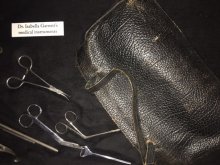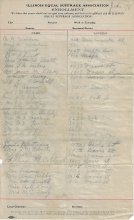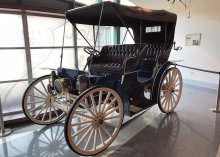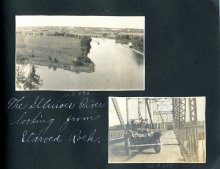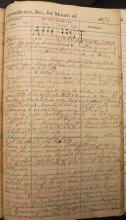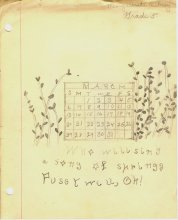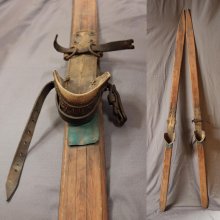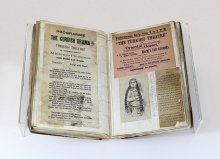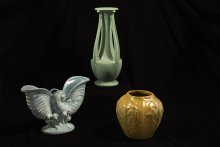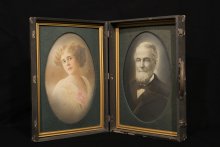Industrializing Illinois (1877-1917)
Following the Civil War, Illinois continued to grow in population, diversity, and complexity. Large-scale heavy manufacturing and a growing commercial sector joined agriculture as major employers of a rapidly growing population. Immigration continued, with African Americans from the South and southern and eastern Europeans joining more established groups. Conflicting interests sometimes led to unrest, strikes, and even violence. During this period, Illinois also became a center of exciting new movements in art, architecture, and literature.
Isabella Garnett was born in Evanston in 1872 and received a nursing degree from Provident Hospital and Nurses Training School in 1895. She later graduated with a medical degree from the College of Physicians and Surgeons (now the University of Illinois College of Medicine) in 1901, making her one of the first female African American physicians in Illinois.
The Illinois Woman Suffrage Association (IWSA) was founded in 1869 and in the early 20th century changed its name to Illinois Equal Suffrage Association (IESA). After more than 40 years of active campaigning, Illinois women gained the right to vote in many statewide races in 1913.
This 1909 Economy Motor Buggy, Model E, was manufactured by the Economy Motor Buggy Company in Joliet, Illinois. It is one of the three known surviving Economy Motor Buggies and the only one that has been fully restored to operating condition.
The Nina Chesebro photo scrapbook includes highlights from a road trip on September 17, 1916, to Starved Rock State Park near Oglesby, Illinois. This page shows a group of friends in a 1914 Model T Touring Car overlooking the Illinois River. The scrapbook holds over 110 images from 1914 through 1918.
A.G. Little began to record the daily events of his farm and family in 1888, when he was 21 years old. He continued until 1917, filling eight journals.
Over 100 years ago, Marguerite Aubrey drew this calendar and rendering of a pussy willow plant for her teacher, Katharine Kyser. Katharine was required by the State of Illinois to submit a portfolio of her students’ best work at the end of each school year, and Marguerite’s pussy willow made the cut.
Shown here is a pair of cross-country skis from 1915. Skiers used the leather straps to secure their boots to the skis. These skis were donated to the Museum of the Grand Prairie in 1968.
In 1893, Chicago hosted the World’s Columbian Exposition—an epic event that drew nearly 27 million attendees from around the world. The fair celebrated art, architecture, social issues, agriculture, and technology through various exhibitions and displays, providing visitors with both entertainment and educational opportunities.
Illinois’ tradition of art pottery can be traced back to the Great Chicago Fire of 1871. In the wake of this tragedy, the need for economical, fireproof building materials was made clear, and the architectural terra cotta industry was born. At the same time, the Arts and Crafts movement inspired ceramists to combine artistry with industry to create pottery whose beauty lay not in hand-applied surface decoration but in innovative shapes.
This sample case was carried by a representative of one of the many late 19th and early 20th century commercial portrait companies that created large crayon portraits from customers’ photographs. Armed with this case, the salesmen traveled (usually by train) across the country, knocking on doors, displaying his products, and deflecting objections in an effort to secure orders.
Pages






